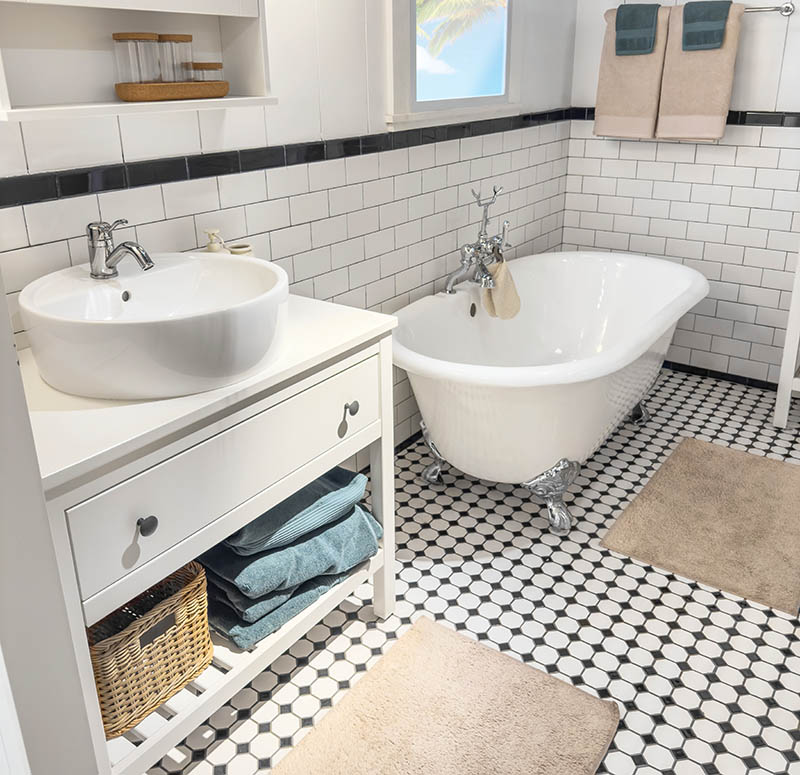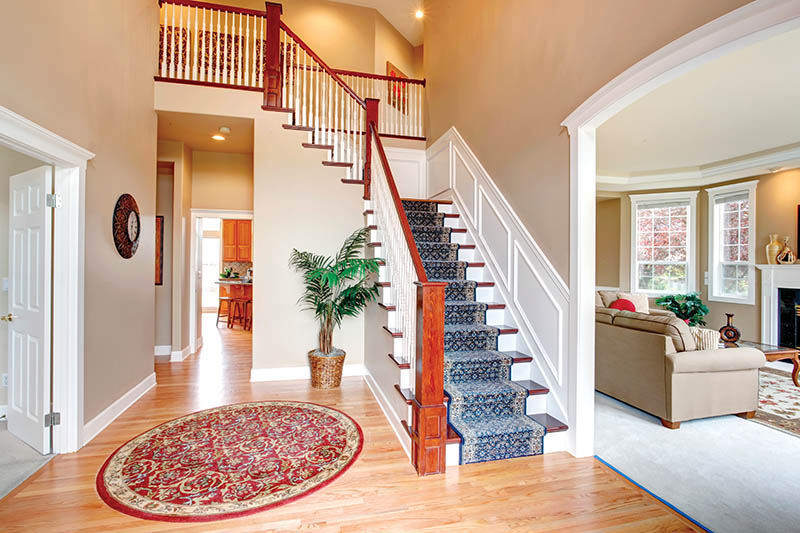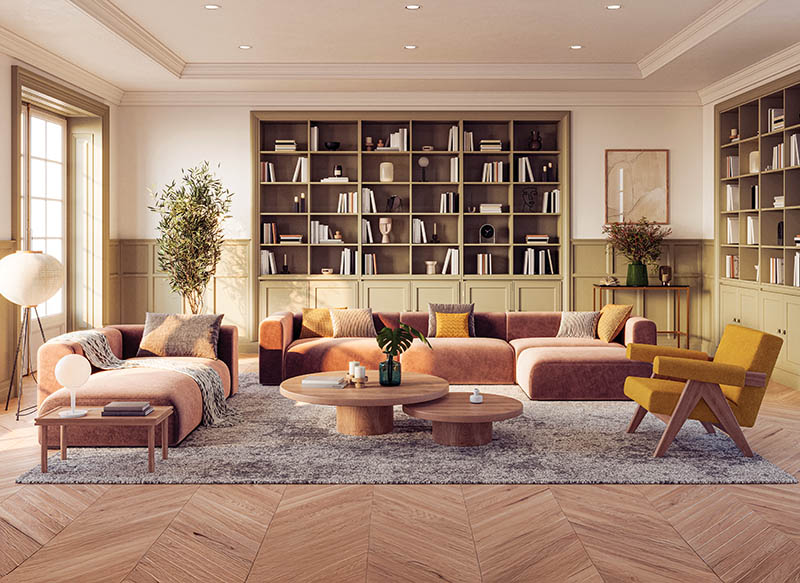Let the Floor Do the Talking
When it comes to home design, we often focus on what’s at eye level—paint colors, artwork, statement lighting. But some of the most impactful design choices happen beneath our feet. Bold area rugs, painted wood floors, vintage tile, and graphic runners can define a space just as effectively as a feature wall or chandelier. In fact, when thoughtfully incorporated, the floor becomes the feature.
Whether you’re decorating from scratch or looking for a way to refresh an existing room, letting the floor take center stage can elevate your home’s personality while still remaining functional. Here’s how to make the most of what’s underfoot—without overwhelming your space.
Go Bold with Area Rugs
Rugs are one of the easiest and most flexible ways to introduce color, pattern, and texture. They can serve as a visual anchor, define distinct zones in an open floor plan, or breathe life into a neutral room.
Oversized or graphic rugs work especially well in minimalist spaces, where they can become the central focal point without competing with other decor. Vintage or Persian-style rugs can add warmth and history, particularly when layered into contemporary or industrial rooms.
Painted Wood Floors with Personality
Painting a wood floor might sound sacrilegious to some homeowners, especially in historic homes—but under the right circumstances, it’s a design-forward move that can completely transform a space.
Painted floors can brighten a dark room, hide imperfections, or add unexpected charm. From classic white or soft gray to checkerboard patterns and colorful borders, the options are practically endless. Painted stairs in particular offer a narrow canvas for creativity—try numbers, stripes, or even ombré effects.
Painted floors tend to work best in rooms where wood isn’t pristine to begin with—think enclosed porches, attic bedrooms, or cottage-style kitchens.
TIPS FOR SUCCESS
• Choose the rug first when possible, and let its colors inspire the rest of the palette.
• Don’t be afraid of color, but consider sticking to one bold element—if the rug is loud, keep furniture and accessories more subdued.
• Use rug pads to add cushioning and prevent slipping, especially in high-traffic areas like hallways or kitchens.

Celebrate Original Tile
There’s a reason vintage tile has made a major comeback in recent years—it’s full of character, often handcrafted, and always full of story. Whether it’s a patterned hex tile from the 1920s or a colorful mid-century mosaic, original tilework deserves to be celebrated, not torn out.
In older bathrooms, lean into the nostalgia by pairing vintage elements with updated fixtures that complement its character—perhaps a modern sink or floating vanity that doesn’t block the view of the floor. In entryways or sunrooms, patterned tile can become the entire design concept.
Even newer homes can benefit from tiled floors with personality. Consider encaustic-look tiles in laundry rooms, bold cement tiles in powder rooms, or terrazzo in modern kitchens.
TIPS FOR SUCCESS
• Prep is key. Sand, clean, and prime thoroughly for a durable finish.
• Choose a floor paint formulated for high-traffic use, and allow plenty of curing time.
• Consider stencils or masking tape to achieve crisp lines or geometric designs.

Statement Runners for Style & Function
Hallways and staircases are often overlooked when it comes to design, yet they’re some of the most frequently used spaces in the home. A vibrant runner can soften these transitional areas while adding unexpected color and energy.
Patterned or vintage runners are especially effective on stairs, where the repetition of each step enhances the visual impact.
In long hallways, a runner can break up monotony and create rhythm. Bonus: They help reduce noise and protect high-traffic surfaces.
TIPS FOR SUCCESS
• Clean and reseal vintage tile to restore vibrancy and protect from moisture.
• If the pattern feels too busy, balance it with solid colors on the walls and ceiling.
• Avoid placing rugs over tile unless it’s for warmth or safety—let the craftsmanship show.

Balance Is Everything
The key to using the floor as a design element is balance.
If your flooring is loud, keep the surrounding elements clean and intentional. If your room is minimal, a floor with personality can become the showstopper. Not every room needs a statement floor—but every home can benefit from at least one.
Entryways, powder rooms, and stairwells are great candidates for bolder underfoot choices, while main living areas might benefit from subtler grounding tones.
When done thoughtfully, floors don’t just support the design of a room—they define it. They set the tone, carry the eye, and tell a story that no wall color can quite match. So next time you’re planning a room refresh, look down. You might already be standing on your next design idea.
Tips for Success
• Use a stair rod or rug tape to ensure safety on stair runners.
• In hallways, leave a few inches of flooring visible on each side for a tailored look.
• Don’t shy away from layering—a flatweave runner over hardwood or tile adds texture and warmth.